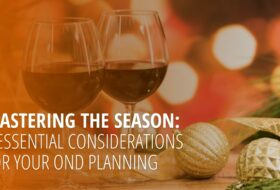We know, in some regions, that traffic control is a real problem. Other areas – like Napa and Sonoma – are often looking for more qualified traffic into our wineries. And of course, when it comes to traffic levels in our tasting rooms, it sometimes seems like it’s either feast or famine… and the feast is right around the corner. Since our high season will soon be here (YAY!), let’s prepare now for the flood of guests who will drop in this summer.
With some forethought and creativity, we can master the art of turning high traffic into relationships and high conversion to sales, club memberships, and email sign-ups. The following may not work for every high-volume winery this season, but here are some ideas for thought.
First and Foremost
Our main objective is to introduce our brand to newcomers, so that they will fall in love with us. Everything we do needs to communicate and reinforce our compelling, differentiated message. Having lots of guests is no excuse to abandon our well-thought-out brand proposition, so all our strategies must be in sync with how we want our new fans to remember us. That said, however, we need to be creative with our solutions to dealing with high traffic levels while also staying true to our brand.
1. Offer Fewer Choices
On busy summer weekends, reconsider the freeform ‘choose any 6’ tasting in favor of a fixed flight or two. This will save time since our customers won’t have to make 6 individual choices and we can have the flight wines stocked, opened, and ready to pour. We also want to consider eliminating any labor-intensive experiences on weekends in favor of ones that are simpler to execute.
2. Silent Selling Materials
Order forms, club brochures, email sign-up cards, and pens need to be present at every guest’s place at the bar or table. These may prompt our visitors to ask questions, and at the very least will help remind us to discuss the features and benefits of each wine and our club program as we go along. It also behooves us to have the last or next club shipment prominently displayed and appropriately signed to encourage customers to become part of our family. Upcoming events should also be posted to prompt a return visit in the near future.
3. Create Tasting Zones
Create zones for the tasting bar so that whole sections can be served at the same time. As we wait for the section to fill, offer a splash to keep the earlier arrivals happy. Stagger the starting times so that one group of guests is enjoying the wine just poured while in the next section, another group is getting started with their first wine. A side benefit is that the individuals in each section may start to converse and get to know each other. Now we are serving a group of 6 instead of 3 groups of 2, which can be easier. For seated tastings, follow the same idea by seating guests in groups in nearby tables.
4. Creative Utilization of Space
Besides the tasting bar, where else can we host guests? Walk the property with an open mind. Think about setting up a plank on two barrels in a courtyard in good weather or in the tank room in case of rain. Even a nearby broom closet can be converted to a private ‘speakeasy’ space for guests to enjoy their experience. For a winery that is very formal, the addition of a table cloth and a simple vase of flowers can lift the experience. Fast set up and breakdown are the keys to these ad hoc spaces, and we need to have mobile POS so that we can complete transactions at each site.
5. No Excuses Mindset
It’s easy to fall into the routine of smile/pour/good-bye, just to keep the masses happy and moving through. However, we can’t forget that we are primarily in the business of creating relationships, so we need to positively profile our guests and fill their needs. Do we already have a relationship with them? We talk to a club member who already knows us differently than we talk to someone who is brand new to our winery. Separately, what kind of wine buyers are they? Know-it-alls have different needs than newbies do, and we must master the art of figuring out who these customers are so that we know how best to serve them.
We also have business objectives to meet – the WISE Triple Score – sell the wine, sell the club, get the contact data. We need to drop hints and talk about our wines and club throughout the experience, so that our invitations to buy wine, join the club, and stay in touch by signing up for the email list will be a natural outcome of the tasting instead of the ‘used car salesman approach’ that fires off a bunch of questions at the end.
Bring on the feast, we will be ready!




